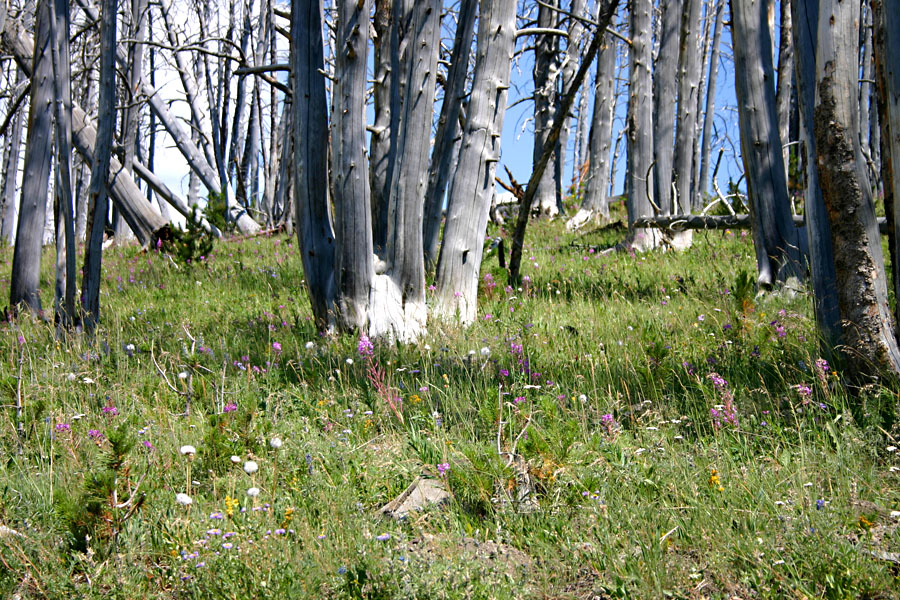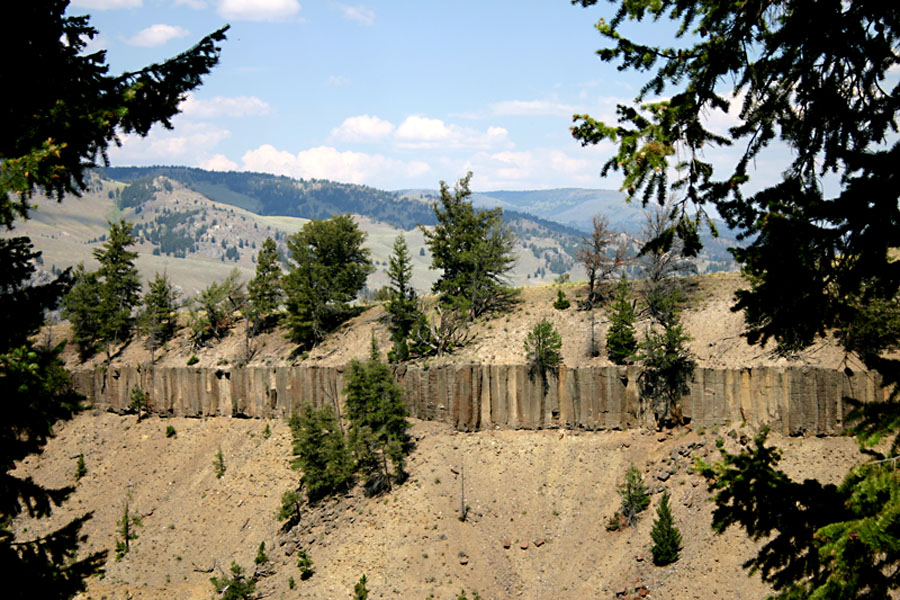July 20, 2007 - The Trip West
Yellowstone National Park

Drove all over - Fire Hole Canyon, Fire Hole Lake, Fountain Paint Pots,
Norris Geyser
Basin, Roosevelt-Tower, Mount Washburn...mebbe others.

Fire Hole Canyon - the Fire Hole River has it's source near Old Faithful.

Fire Hole River Falls

Fire Hole Spring - along Fire Hole Lake Drive.

Great Fountain Geyser - along Fire Hole Lake Drive.

Fountain Geyser - at Fountain Paint Pots.

Opal Pool - at Fountain Paint Pots.

Leather Pool - at Fountain Paint Pots.

Silex Pool - at Fountain Paint Pots.

Turquoise Pool - at Fountain Paint Pots.

One of several Restored Yellowstone Tour Buses.

Steamboat Geyser - Norris Geyser Basin. Steamboat has an unpredictable cycle..it has
erupted once every 4 days to 50 years. When it does erupt it reaches 400 feet! What is seen here is
not one of the major eruptions.

Emerald Pool - Norris Geyser Basin.

Gibbon Falls

Grand Prismatic Spring - Midway Geyser Basin
. This thermal pool is quite large and extremely colorful.
It is difficult to capture the effect with a camera, but when you look at the steam rising
from the pool, the sunlight is broken into the colors of a prism or rainbow...purple at the left, then blue,
green, yellow, red as you look right. The closeup and panorama images below give
you a minimal idea of the effect you can see with the naked eye. It's amazing!

Grand Prismatic Spring - closeup.
 Grand Prismatic Spring - Panorama - Maximize your browser and scroll to the right to see the entire image.
Grand Prismatic Spring - Panorama - Maximize your browser and scroll to the right to see the entire image.

Grand Prismatic Spring - the overflow from the spring pours 4,000 gallons of water per minute into the Fire Hole River.

In 1988 roughly 30% of Yellowstone was destroyed by fire. Here you see burned Lodgepole Pine
trees and you see the young trees (20 years old) which were seeded when the fire burst the
cones on the mature Lodgepole Pines.

Harebells on Mt. Washburn.

Burned spruce and fir trees, fireweed, yarrow, and other wild flowers on Mt. Washburn.

Fireweed on Mt. Washburn - fireweed is usually the first thing to grow on burned over soil.

Tower Fall. No, I don't know why the other waterfalls are called "Falls" while this one is called a "Fall".

Tower River canyon wall - the odd layer is basalt which has crystallized into hexagonal columns - see
the closeup below. This feature can be seen for several miles along the canyon wall.

Closeup of the Tower Canyon wall - this basalt layer is about 30 feet high (my estimate).